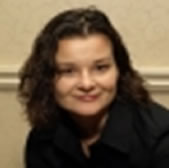Like Alison’s Blog on Meaningful Connections, I too have a combined grade (5/6) and have to find common curriculum connections within both grades. I recently have been able to attend a multi day board workshop on planning Science and Social Studies for a combined grade classrooms. After one session, I volunteered to take on the challenge of becoming a Demo Classroom to discuss my planning process with a group of colleagues and have my class lesson as a demo to allow the opportunity for my colleagues to see how the planning is implemented.
Although I was a little nervous to find the connections, the experience to have one on one time with a board instructional leader was very valuable to my professional learning. I also was able to take the new skills learned and implement them to other areas of the curriculum. The main idea is to find connections between the each grade’s curriculum. Sometimes it is a research skill or an investigation, I also have found connections in the big ideas or concepts in the overall expectations. Remembering Science and Social Studies curriculum are related to topics, you look to find ways to teach the skills and tools needed in combined lessons to allow students to complete some individual or grade group work related to each student’s grade topic.
I also look for ways to combine expectations within my lessons. For example, one lesson I took the kids out for a community walk. While the grade 5s looked for (and took pictures of) areas of concern within the community, the grade 6s went into a Sobey’s, looked for imported food and recorded the data on a chart (country of export and what the product was). The grade 6 students were encouraged to find products from a variety of countries. We then took the information gathered for both grades; the grade 5s selected one area of concern and wrote a letter to City Hall describing the location, what the concern was, and how to fix the concern. The grade 6s completed a research project (in pairs) of a country from the list developed in Sobey’s which Canada imports products from.
Another combined lesson was looking at Immigration and how it affects Canadian Trade. I used the Frayer Model defining immigration, what it looks like, what it doesn’t look like, and examples of how it affects Canada’s trade. I need to highlight, I am just short of 2/3 of the class having an IEP with the range from gifted to learning disabilities. All the students did great on all of these activities and one reason was the activities were connected to their community and their families. Giving the students real life context really does help to engage and make the connections for their learning.
With the many needs in my class and teaching lessons combined, I was worried the students might not have understood the concepts. When I used an exit card for assessment (or assess in any other way) the students have shown me their understanding of the new knowledge and their ability to learn and apply new concepts in a very busy classroom. There are many ways to connect combined curriculum but you do have to think outside the box and sometimes away from the resources provided by your school. I do still look at the resources and team plan with my colleagues. But when I team plan, I take the time to find connections ahead of time so I am ready to expand the team planning ideas into both grades.

